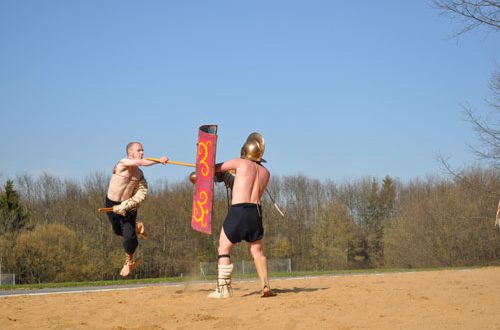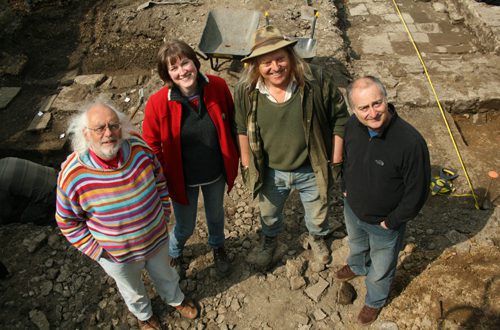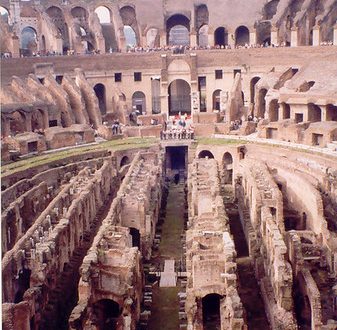Two Roman altar stones have been found in the Scottish town of Musselburgh, six miles east of Edinburgh. They are thought to date back almost 2,000 years and were uncovered during renovation work at a cricket pavilion.
The archaeological excavation took place before building work could start on Musselburgh Cricket Club‘s new pavilion. That could face a delay now that the Roman altar stones and, according to the cricket club, an Iron Age house were found on the first day of the dig.
One of the altar stones has been identified as dating from the second century AD and is believed to be dedicated to Jupiter.
According to the East Lothian Courier, the cricket club gained permission for its building works on condition that the archaeological dig was carried out first. Historic Scotland, an executive agency of the Scottish Government, added this requirement because the cricket club is based within a Scheduled Ancient Monument area in fact there is a known second-century Roman fort in the vicinity.
A spokesman from Historic Scotland told the paper: The discovery of two almost intact carved Roman altars in Lewisvale Park is the most significant find of its type in the last 100 years of investigation and discoveries at Inveresk.
The Roman fort at Inveresk, Musselburgh, is known to date from the Antonine period pottery found at the site show that the fort was inhabited for a period roughly corresponding to the rule of Antoninus Pius (from 138 161 AD). Excavations during the 20th century have found evidence of a civilian settlement surrounding the fort, but the extent of it is not yet known. Lewisvale Park, Musselburgh Cricket Club’s grounds, is a few hundred metres east of the site of the Roman fort at Inveresk.
An amphitheatre and baths have been found near to the Roman fort.
The Romans settled in Musselburgh/Inveresk shortly after the invasion of Scotland in 80s AD. The governor of Britain between 78-84 AD, Gnaeus Julius Agricola, led troops deep into Scotland and built an extensive network of road and forts to try and keep the tribes of northern Britain under control. But when his governorship of Britain ended in 84 AD, the Romans stopped their attempts to subdue most of modern-day Scotland and maintained their military camps nearer to the area where they subsequently built Hadrian’s Wall in the 120s.
In the summer of 2009, a stone altar dedicated to an eastern version of the Roman god Jupiter (Jupiter Dolichenus) was found at the military fort at Vindolanda.





